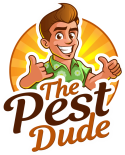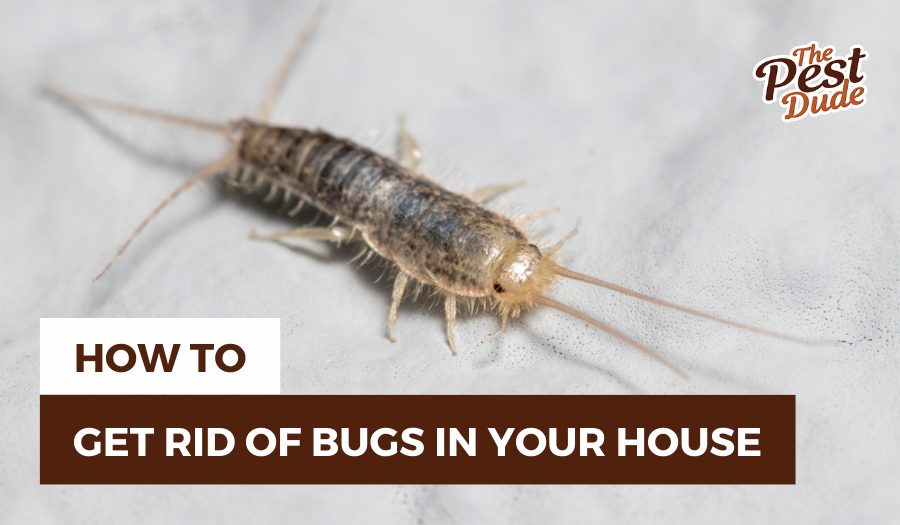Have you noticed unidentified bugs crawling around your house? Maybe they’re taking over your bathroom or pantry, and you’re not sure how to get rid of them.
Don’t worry – you don’t have to go it alone.
Here at Pest Dude, we have more than 20 years of experience in the pest control industry, and we’ve compiled that expertise into this complete guide.
Key Takeaways
- To get rid of bugs in your house, start by inspecting for and identifying them. Next, clean and sanitize your space, decide on the right bug treatment, keep the bugs from coming back, and monitor for bug activity to make sure your efforts are working.
- Keep yourself safe during DIY bug removal by wearing protective gear like gloves and a mask.
- While you may be able to handle small infestations with DIY tactics, larger or more dangerous infestations may require professional assistance.
Before You Get Started
Set yourself up for success! Follow these tips:
- Prioritize safety: Always wear protective gear such as gloves and masks when handling chemical bug repellents or traps, and make sure that any DIY methods you choose are safe for your whole family – including your pets.
- Decide whether to DIY or hire a pro: Assess the severity of your bug infestation and decide which bugs are present in your space (more on this in a second) to decide whether to DIY the process or hire a professional. Minor issues can often be managed through DIY methods. Severe, widespread, or potentially dangerous infestations (such as those involving termites), meanwhile, require the services of a professional exterminator.
How to Eliminate Bugs Infestations in Your House
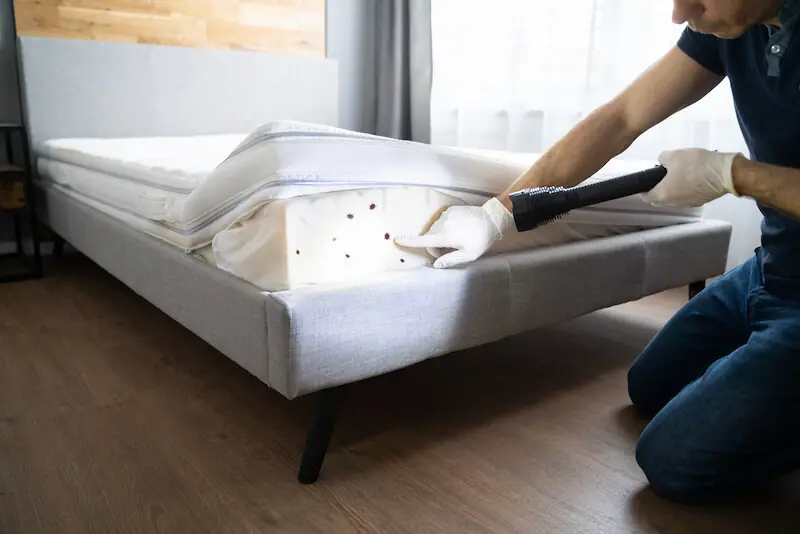
1. Inspect for Activity
Start by inspecting areas where bugs are most likely to hide or enter your home.
Here’s how to do it:
- Check damp areas: Bugs, especially cockroaches and silverfish, thrive in moist environments. To spot them, look under sinks, around water heaters, and near any leaking pipes.
- Inspect food storage areas: Pantries and cabinets where food is stored can attract ants, weevils, and other pests. Look for signs of infestation, including small holes in food packaging, the presence of small, brownish-black insects in or around food containers (especially in products like flour, rice, and other grains), or an unusual, musty odor emanating from stored food.
- Look for entry points: Check your windows, doors, and foundations for cracks or gaps where bugs could enter from outside. While you’re at it, inspect all of your screens and weather-stripping for signs of damage.
- Use a flashlight at night: Some pests, including spiders and centipedes, are nocturnal and easier to spot with a flashlight during the night.
As you find areas of bug activity, use this resource to figure out what kinds of bugs you’re dealing with.
2. Identify the Bugs
Next, you’ll need to identify the creepy crawlies you find in your home.
Here’s a brief overview of some of the most common household bugs:
Ants

Ants are common home invaders. They’re known for their foraging behaviors and their ability to build large, elaborate colonies.
- Identification: Ants are small, segmented insects, typically brown or black. Some species have wings.
- Damage: Ants can contaminate food. Some species, like carpenter ants, can cause structural damage.
Cockroaches
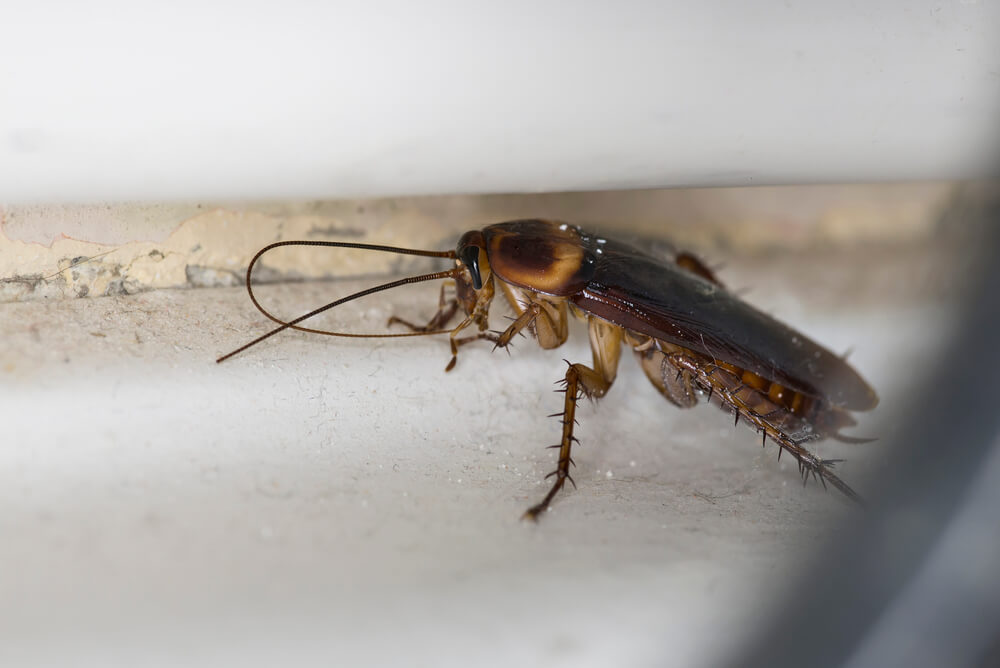
Cockroaches are highly adaptable creatures that thrive in a variety of environments. Known for their survival skills, they can survive for months without food and weeks without water, making them notorious household pests.
- Identification: Cockroaches have oval-shaped, flat bodies that can be brown, reddish-brown, or black. Some have wings.
- Damage: These pests can contaminate food and eating utensils, spread harmful bacteria, and trigger allergies and asthma, especially in children. Their shedding body parts, droppings, and saliva can destroy indoor air quality and lead to respiratory issues. Cockroaches can also damage books, wallpaper, and other materials as they forage.
Spiders

Although spiders are arachnids—not insects—they are common in homes and may help control other pests.
- Identification: Spiders are eight-legged creatures, often found in secluded or undisturbed parts of the home.
- Damage: Most household spiders are harmless, but their presence and webs can be unsettling. Some, like the black widow, can be dangerous.
Earwigs

Earwigs are small, nocturnal insects belonging to the order Dermaptera. During the day, they are usually found in damp, secluded places.
- Identification: You can identify earwigs by looking for the pincers at the back of their long, flat bodies, which they use for defense.
- Damage: Contrary to popular belief, earwigs pose no harm to humans and are not known to crawl into ears. Earwigs are mostly a nuisance pest, but they can damage soft-stemmed plants and are unsettling to find indoors.
Flies

House flies and fruit flies are common household pests. Both are attracted by food and waste.
- Identification: Flies are small, flying insects. House flies are larger and darker than the smaller, lighter-colored fruit flies.
- Damage: Flies are known to contaminate food and surfaces with bacteria and pathogens. They also spread diseases.
Stink Bugs
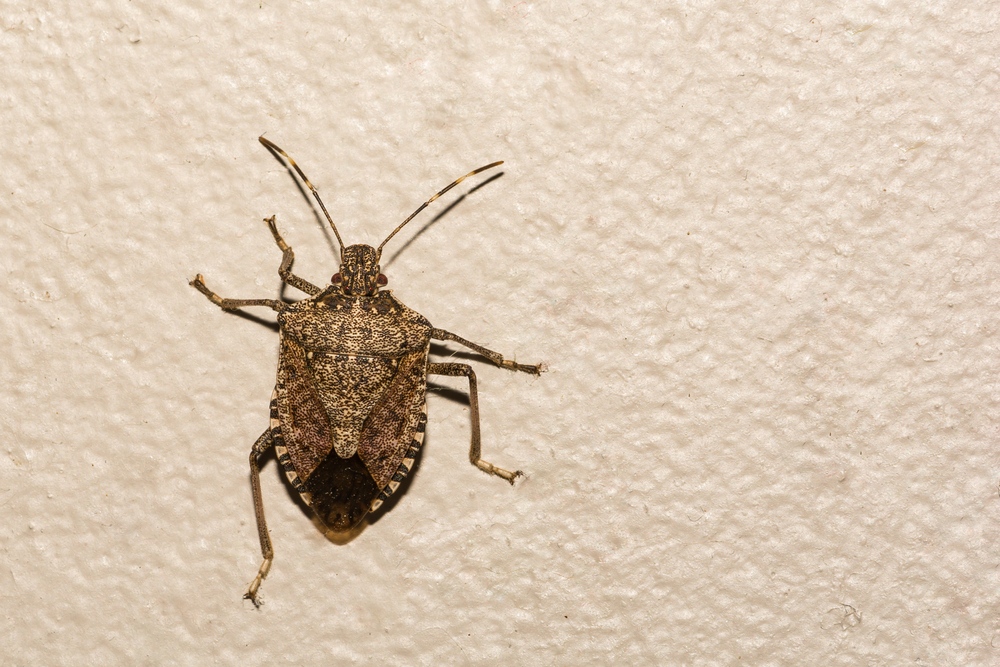
Stink bugs are known for the unpleasant odor they release when disturbed or crushed.
- Identification: Stink bugs have shield-shaped bodies, which are usually about 2 cm in length. They typically have a mottled brown color, although shades can vary from green to gray. Another distinctive feature is the presence of six legs and two long antennae that are often banded.
- Damage: Stink bugs are primarily a nuisance but can also damage plants and crops.
House Centipedes

Fast-moving and nocturnal, these predators can be startling to find in your home.
- Identification: Centipedes have long, slender bodies with 15 pairs of long legs, making them very fast.
- Damage: They prey on other insects. They are generally harmless to humans but can be a sign of other insect problems.
Silverfish
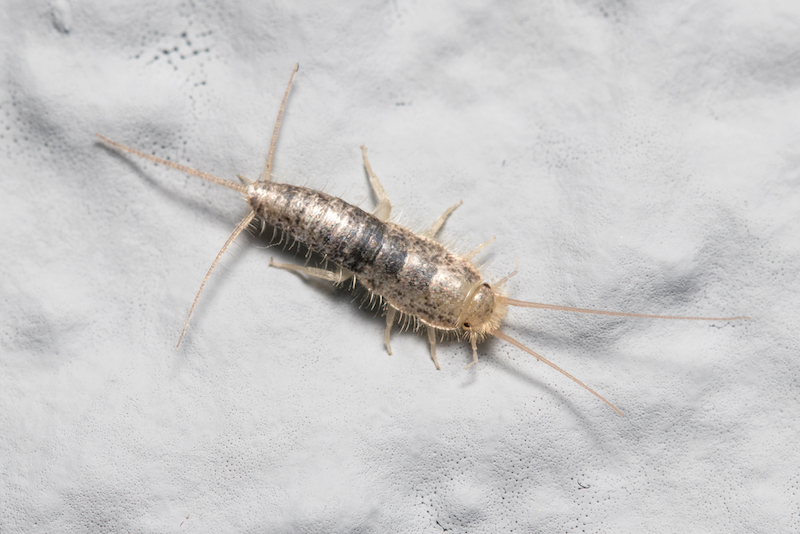
Silverfish are known for their destructive feeding habits, often ruining papers, clothing, and wallpaper.
- Identification: Small, wingless insects with a silvery-gray color and a tapered, fish-like shape.
- Damage: They consume carbohydrates, notably sugars and starches, damaging books, wallpaper, and clothing.
Bed Bugs
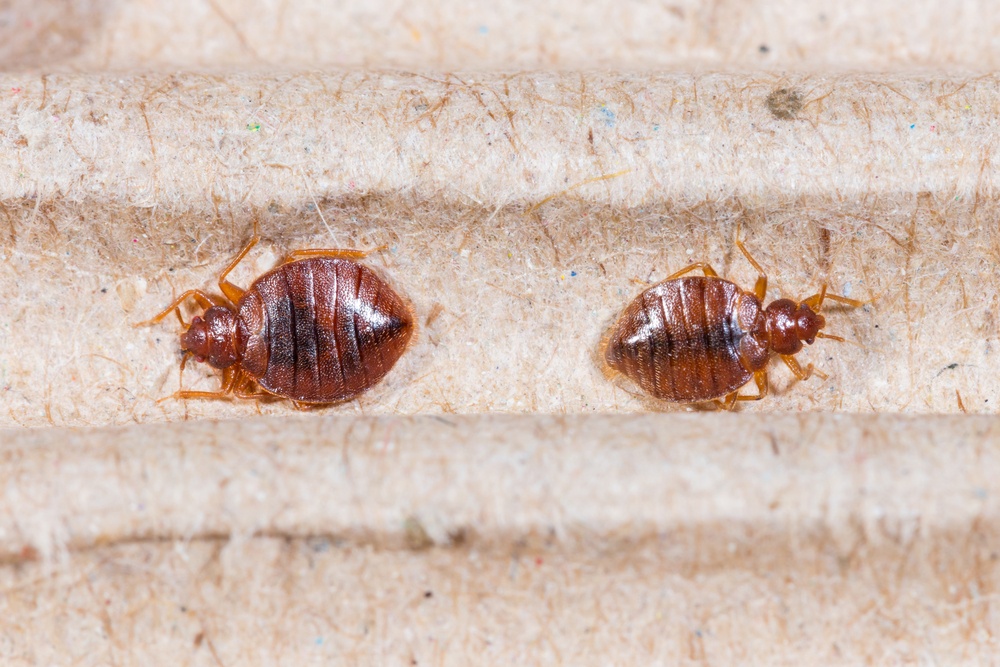
These pests are infamous for their bites and for being difficult to get rid of.
- Identification: Bed bugs are small, reddish-brown insects that feed on blood. They are often found in or near beds and couches.
- Damage: They do not transmit diseases, but their bites can cause itching and allergic reactions.
Fleas
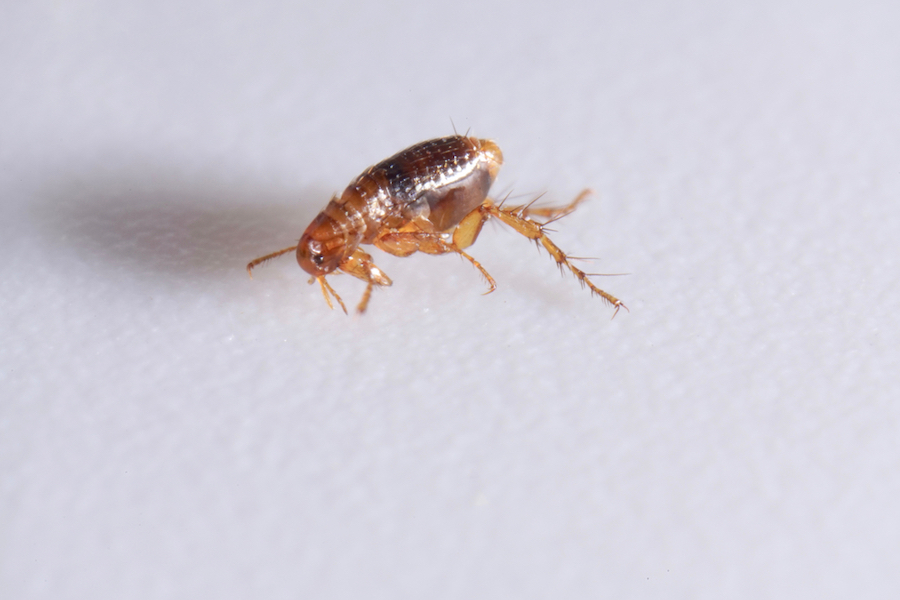
Fleas are external parasites that feed on the blood of mammals and birds.
- Identification: Fleas are tiny, dark-colored insects that move quickly and can be difficult to catch or see with the naked eye.
- Damage: Their bites can cause itching and discomfort in pets and humans, and they can transmit diseases.
3. Clean and Sanitize
Once you’ve identified the pests that are present in your home and where they’re hanging out, you need to focus on getting rid of what attracts them.
Here’s how to do it:
- Identify and Remove Food Sources. Clean eating areas to get rid of food crumbs or spills. Store food in sealed containers. Dispose of garbage regularly and use cans with a tight-fitting lid.
- Eliminate Moisture Sources. Moist areas are breeding grounds for pests. With this in mind, fix leaky faucets and pipes, use dehumidifiers in damp areas like basements and bathrooms, and ensure good ventilation in moist areas.
- Vacuum Regularly: Frequently vacuum carpets, rugs, upholstered furniture, and areas where pets sleep to remove eggs, larvae, and adult bugs. Pay special attention to corners and under furniture. Use a vacuum with a HEPA filter.
- Declutter: Remove clutter to make it easier to spot and eradicate bugs before they become a serious problem.
4. Decide on the Right Treatment
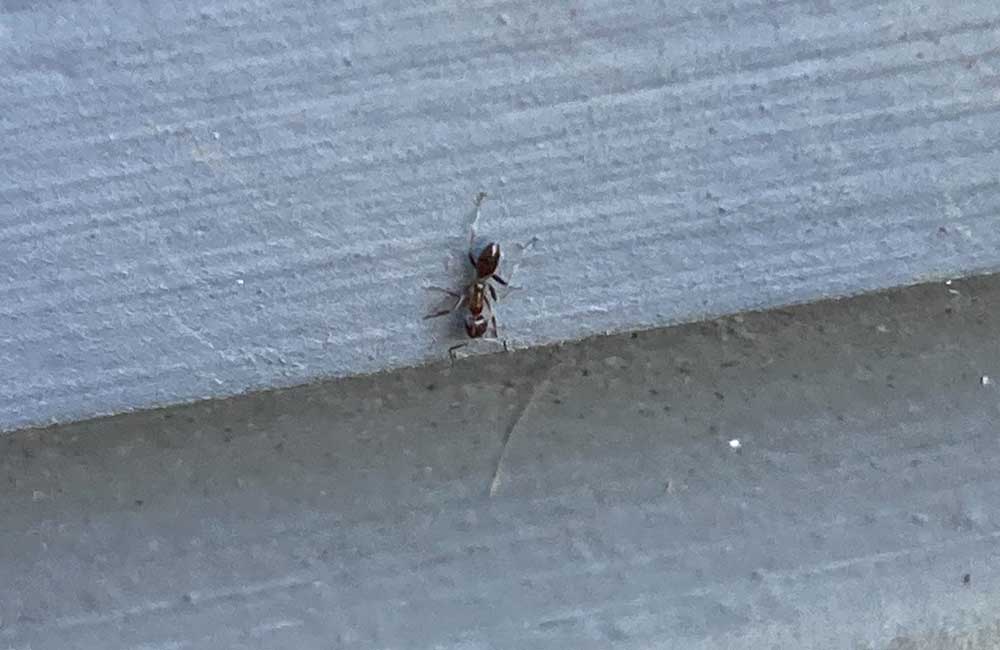
Chemical Methods
Insecticide Sprays
Insecticide sprays are chemical formulations used to kill or repel insects. They work by targeting insects’ nervous systems or other vital functions, effectively reducing their populations, preventing damage to crops and structures, and potentially reducing the spread of insect-borne diseases.
- Pros: Insecticide sprays are readily available and can be directly applied to infested areas, offering quick results. They are particularly effective against ants, cockroaches, and spiders.
- Cons: The chemicals used can be harmful to humans and pets if not used according to the instructions. There’s also the risk of the bugs developing resistance over time.
Baits and Traps
Baits and traps for insects are devices or substances designed to lure, capture, or kill insects to control their populations and minimize their impact.
- Pros: Baits and traps are less invasive than sprays, as they are designed to attract and eliminate pests like cockroaches and ants without spreading chemicals around the home.
- Cons: They may take longer to show results and require proper placement to be effective. Additionally, they may not be suitable for large infestations.
Foggers (Bug Bombs)
Foggers, also known as bug bombs, are aerosol products designed to release pesticides into an area to eliminate pests in an enclosed space.
- Pros: Foggers can cover large areas and are effective at penetrating hard-to-reach places, making them useful for combating fleas, bedbugs, and other insects.
- Cons: They require vacating the area for a period of time, and there’s a risk of explosive hazards if not used correctly. Overuse can lead to health risks from residual chemicals.
Non-Chemical Methods
Diatomaceous Earth
Diatomaceous earth, often abbreviated as DE, is a naturally occurring, soft, siliceous sedimentary rock that is easily crumbled into a fine white to off-white powder.
- Pros: DE is safe for use around pets and children. It dehydrates insects on contact and is effective against ants, roaches, bedbugs, and other crawling insects.
- Cons: It may take several days to be effective and requires reapplication after rain or watering.
Essential Oils
Essential oils like lavender, peppermint, and tea tree oil serve as natural insect deterrents and air fresheners.
- Pros: Certain essential oils, such as lavender, peppermint, and tea tree oil, are non-toxic, natural deterrents for insects. They are effective against spiders, ants, mosquitoes, and some types of beetles.
- Cons: Requires regular application and may not be as effective for large infestations.
Baking Soda
Affordable and readily available, baking soda can effectively kill pests by causing internal distress when ingested.
- Pros: Easily available and affordable, baking soda can be used to kill pests like cockroaches and ants by causing internal distress when ingested.
- Cons: It requires pests to consume it, making it less effective for those that do not feed within treated areas.
5. Prevent Bugs From Getting into Your Home
Focus on keeping bugs out—also known as exclusion—to prevent them from bugging you in the long term.
Exclusion involves creating physical barriers that prevent pests from entering your home.
Here’s how to do it:
- Inspect and Seal Cracks and Gaps: Regularly inspect the exterior of your property for any cracks, gaps, or holes in walls, foundations, and around doors and windows. Use silicone caulk, steel wool, or copper mesh to seal these openings. Remember to check utility and pipe entries, as these are common entry points for pests.
- Install Door Sweeps and Weatherstripping: Install door sweeps to prevent pests from crawling underneath doors. Then, apply weatherstripping around windows and doors to close the gaps, making it harder for pests to get inside.
- Repair Screens: Check window and door screens for tears and holes. Repairing or replacing damaged screens will prevent flying insects, such as mosquitoes and flies, from entering when windows are open.
- Clean Up Your Landscaping: Trim trees, shrubs, and vegetation away from your home’s siding since pests can use branches touching your home as bridges to access it.
6. Monitor for Decreased Activity
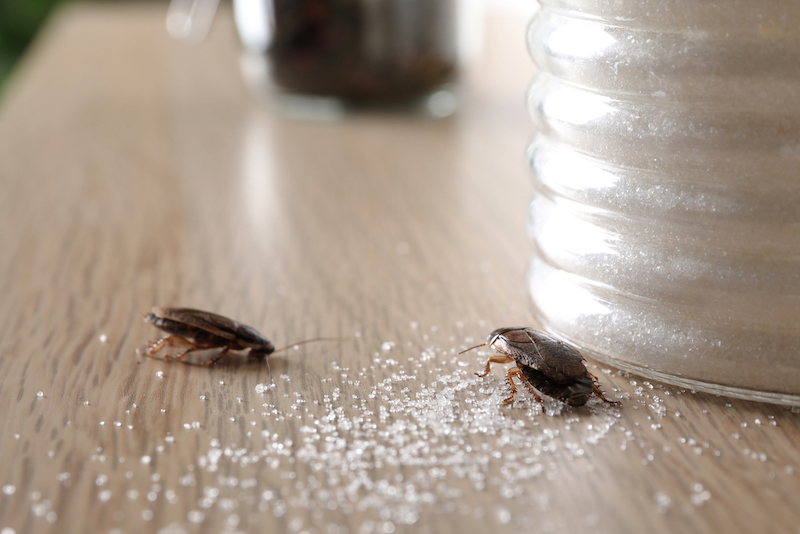
Regular monitoring helps you detect and stop new infestations before they become a significant issue.
Here’s how to do it:
- Visual Inspections: Conduct weekly visual inspections in and around your home, paying close attention to previously affected areas and potential entry points. Look for new signs of pest activity, such as droppings or damage to structures and plants.
- Use Traps: Placing non-toxic traps around your home can help monitor pest levels. Compare the number of pests caught over time to judge the effectiveness of your exclusion efforts.
- Listen for Noise: At night, when it is most quiet, listen for any sounds that could indicate pests, such as scratching, scuttling, or chirping. A decrease in these noises can suggest a reduction in pest presence.
If you do these things and still don’t see a reduction in pest activity, it’s time to call a professional exterminator. A professional can offer more advanced solutions to deal with stubborn pest problems.
Need an Exterminator? We Can Help
You don’t have to share your space with bugs forever – help is just a phone call away!
Whether your DIY efforts have failed or you just want the fast, comprehensive service offered by a pro, we’re here for you.
Contact us at (844) 532-0076, and we’ll connect you with a reputable, local exterminator.

Get a Free Quote
Give us a call today to receive your free, no-obligation pest control quote.
FAQs
A sudden increase in bug activity in your house can be due to various things, including changes in weather, overly humid or damp conditions, or easy access points like cracks in walls, loose windows, or door gaps.
If you’ve noticed a new bug infestation, a comprehensive inspection should always be your first step.
Chemical pesticides like sprays and baits usually offer the fastest results.
That said, handling these chemicals cautiously and following all product instructions carefully is critical.
Additionally, you should remember that while these methods can offer immediate relief, they might not address the root cause of an infestation. Even worse – some pests are resistant to pesticides, so you can use them all you want and still not resolve the infestation.
If you want fast results, hiring a professional exterminator who can get rid of the pests quickly and safely is best.
Start by ensuring all windows and doors are tightly closed, and consider using screens to keep insects out.
Next, switch your outdoor lights to yellow bulbs or motion-activated lights, which are less appealing to insects. Keep your outdoor space clean by disposing of trash regularly and not leaving food out.
Finally, use natural deterrents like citronella candles or essential oils such as lavender and eucalyptus around entry points to keep bugs at bay during nighttime hours.
